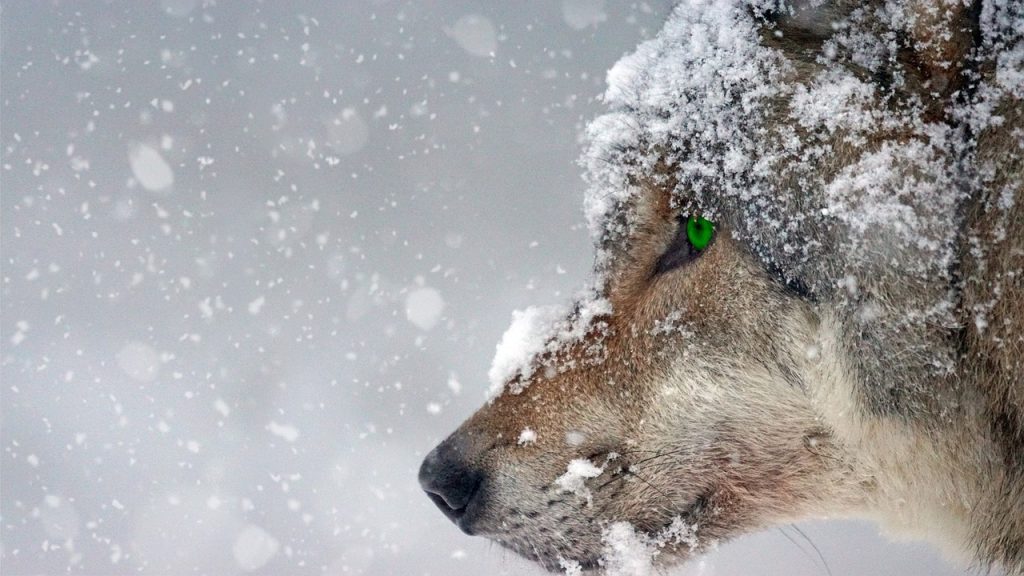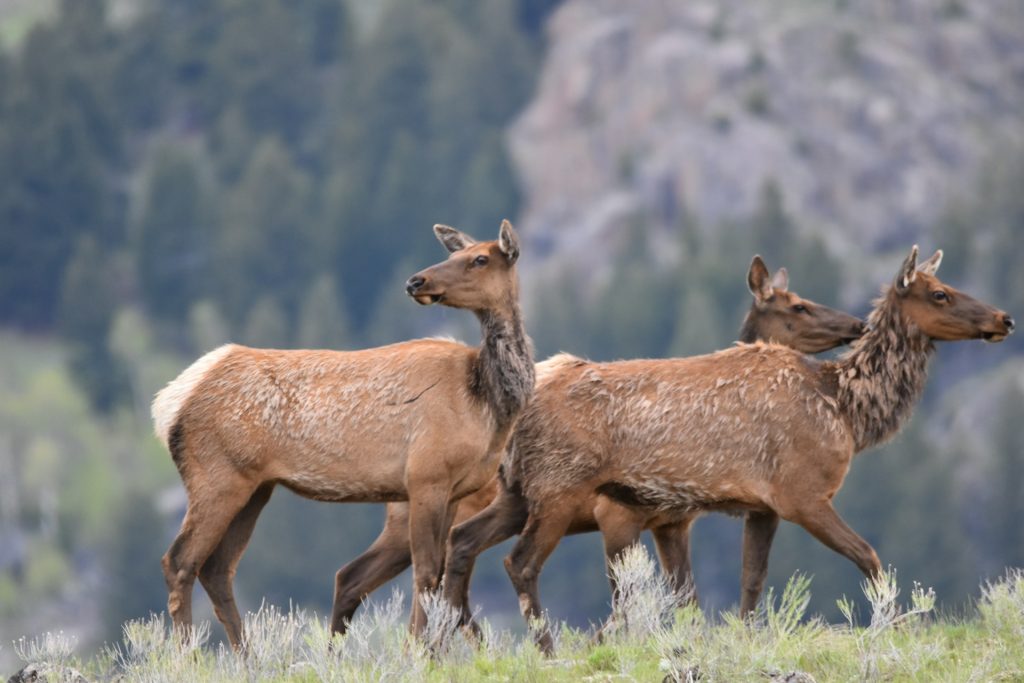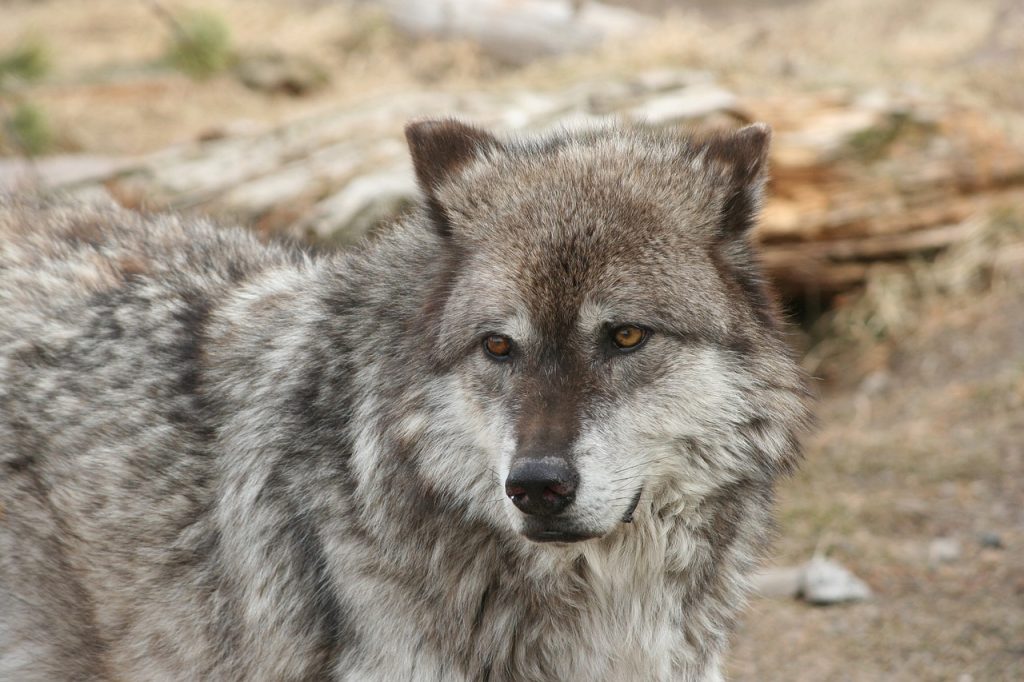When Wolves Returned to Yellowstone – Twenty-five Years On

After twenty-five years, what has been the impact of returning wolves to Yellowstone? The answers range from “as expected” to “surprising.”
As elk are by far the preferred food of wolves—accounting for over 90 percent of their diet—most scientists predicted that the park’s wolf population would grow at the expense of Yellowstone’s elk herd. And to some extent, this has happened. At the time of wolf reintroduction, Yellowstone’s northern elk herd population reached historically high levels—close to 20,000 head.
Between 1995 and 2003, the wolf population in Yellowstone grew by about 10 percent per year, topping out at an estimated 160 individuals. During the same period, the winter elk herd dropped approximately 50 percent (from roughly 16,700 to 8,300 head). However, after 2008, Yellowstone’s wolf population also fell, leveling out at roughly eighty to one hundred animals in eight to ten packs as of 2020 (with approximately 500 wolves total in the Greater Yellowstone Ecosystem). The decline was due in part to the on-again-off-again [endangered species] listing debates, which periodically allowed wolf hunting, along with episodes of disease and continued federal actions to lethally remove “problem” wolves.
In short, as expected, wolves influenced elk populations, but their precise effect cannot be easily separated from other factors, including the effects of climate change. Impacts by wolves on other aspects of Yellowstone’s ecosystem, however, have been surprising.
How can it be, for example, that the return of wolves could somehow alter Yellowstone’s rivers and streams? Or that the presence of wolves would result in an increase in songbirds or amphibians? No one saw these things coming.
Though still debated, the concept of the “trophic cascade” offers one explanation of what has transpired. The term trophic refers to different levels in a food web—“producers” like plants and grasses that transform sunlight into edible energy; “primary consumers,” like herbivores, that eat the plants; “secondary consumers,” like carnivores, that eat the herbivores, and so on. The cascade suggests that introducing a new species at one end of the food web can have a domino-like effect across the entire system.
By reducing elk numbers, the wolves indirectly allowed aspens, willows, cottonwoods, and other woody plants near riverbanks to rebound. This, in turn, reduced stream-bank erosion and provided habitat for songbirds and other species. The renewed presence of larger trees also attracted beavers back to the park. Their dams raised water tables and provided wetland habitats for additional species, some of which serve as food sources for eagles, ospreys, and moose. When wolves returned to Yellowstone in 1995, there was only one beaver colony inside the park. By 2021, there were nine.
How Wolves Change Rivers | A Modern Classic
When wolves were reintroduced to Yellowstone National Park in the United States after being absent nearly 70 years, the most remarkable “trophic cascade” occurred. What is a trophic cascade and how exactly do wolves change rivers? George Monbiot explains.
This video went viral nearly 10 years ago (45+ million views) and has been used in classrooms and museums around the world to teach people the value that every species brings to an ecosystem. Sustainable Human is a 501c3 non-profit whose mission is to evolve human consciousness by examining the underlying stories that give rise to the environmental, social, and economic crises of our time and offer new stories that help humanity to live in harmony with each other and the biosphere.
Wolves may also have benefitted grizzlies by restricting elk browsing of the woody berry-laden plants typically consumed by bears and by providing elk kills that grizzlies can confiscate. Wolves are also believed responsible for reductions in the park’s coyote population, as coyotes likely filled the niche left vacant by wolf eradication in the 1920s. Fewer coyotes mean growth in pronghorn populations (a favorite prey of coyotes) as well as increases in “coyote competitors” like red fox, lynx, bobcats, pine martens, and wolverines.
The cascade effects triggered by wolves result from more than their role in reducing elk numbers. Perhaps their most important influence is described through another concept: the “ecology of fear.” According to this idea, the mere presence of wolves triggers a behavior change in elk. Instead of lingering long hours in one place to graze, often along rivers and stream banks, elk keep on the move, which reduces overgrazing. During the winter months, when deep snows slow their movements, elk have learned it is safer to migrate to lower elevations outside of park boundaries to elude predators. Ironically, this also makes more elk available during hunting season.

In the first ten years after wolf restoration, hunters increased their harvest of elk. However, Yellowstone’s northern elk herd declined considerably from 1995 to 2013. As a result, in 2009, Montana halted the winter hunting season that had taken place near Gardiner since 1976. No one is certain how much of the elk population decline is due to wolves versus other factors.
Wolves may benefit the hunting industry by helping curb wildlife diseases. Elk represent common carriers of brucellosis and chronic wasting disease in the region. Wolves tend to target sick individuals—and are immune to the effects of these diseases themselves—so they may help control the spread within the herds. Wyoming estimates that elk killed by wolves equate to a loss of approximately $2.9 million per year to the local hunting industry when one includes indirect spending on hotels, restaurants, and other services. But such numbers pale in comparison to the economic benefits created by wolf restoration. In the Greater Yellowstone area, wolf tourism totaled more than $35.5 million in 2006. In 2017, estimates of the annual economic contribution of wolves increased to over $65 million.

For Yellowstone scientists, the advent of wolf tourism is another unexpected outcome of restoration. All reintroduced wolves received radio collars and tags, offering researchers unprecedented opportunities to track their movements and study individual life cycles. Soon, park visitors joined in, giving rise to “wolf watchers.” People armed with high-powered cameras, telescopes, and notepads gather each day to follow the activities of various wolves and wolf packs in Yellowstone.
The Park Service resists giving names to wolves to avoid anthropomorphizing. They manage Yellowstone’s wolves based on population dynamics, which can be complicated if a famous wolf is shot for attacking livestock or by a hunter. The cumulative economic benefit of a celebrity wolf is orders of magnitude higher than the money accrued by the single hunter who might shoot it. Yet the conflict – and the experiment – continue.

Excerpted from A Place Called Yellowstone: The Epic History of the World’s First National Park, copyright © 2024 by Randall K. Wilson. Reprinted by permission of Counterpoint Press.






